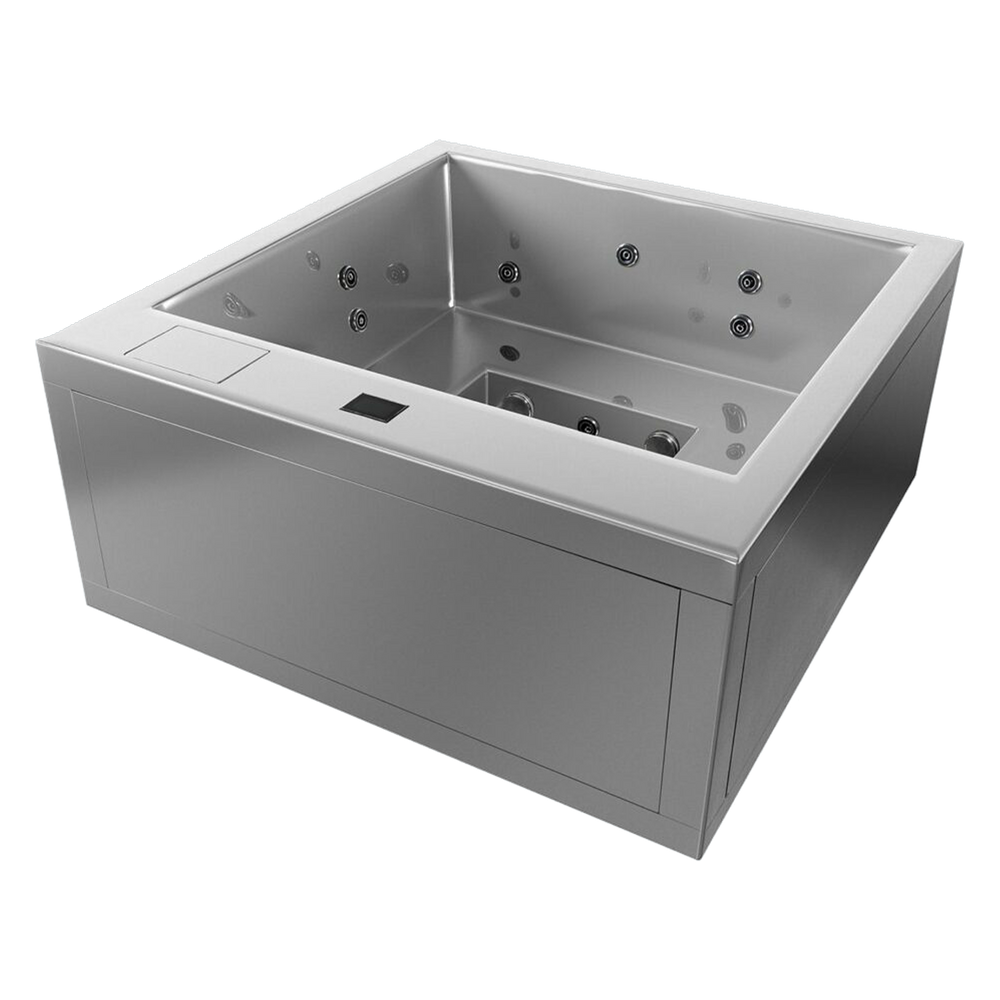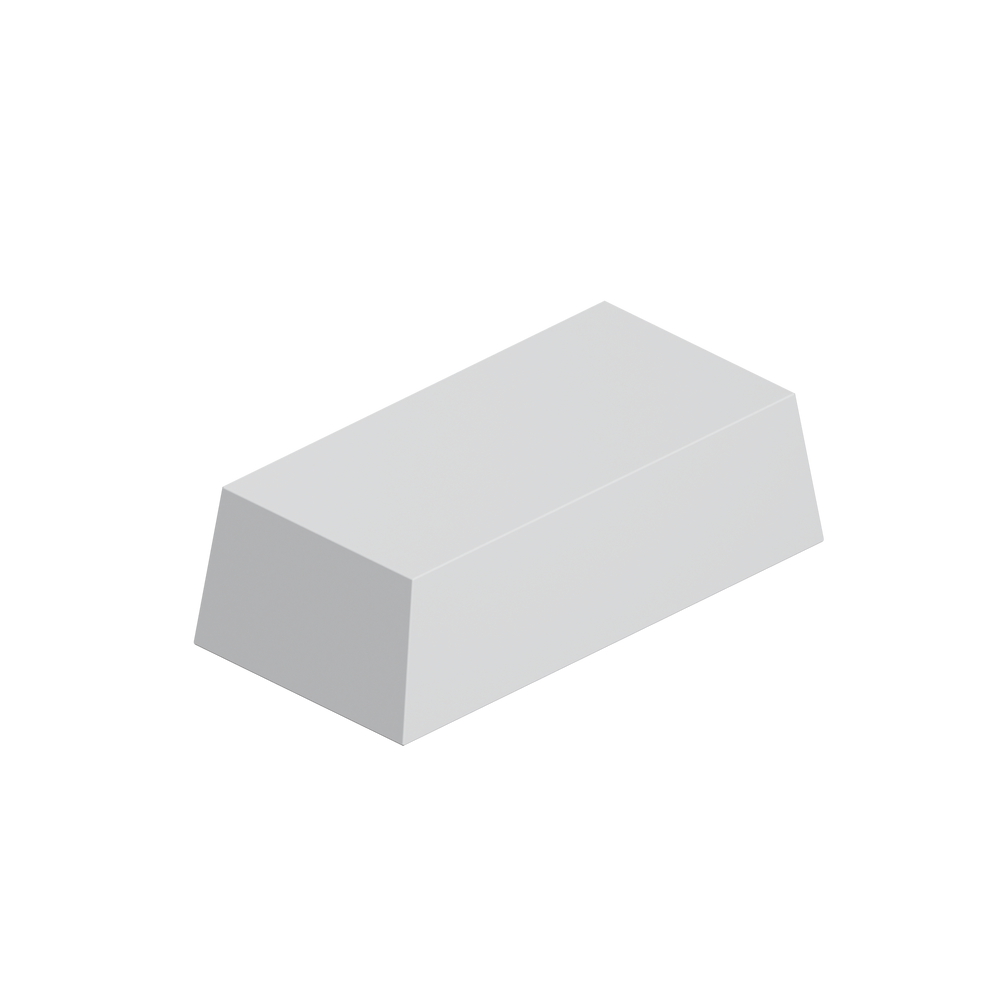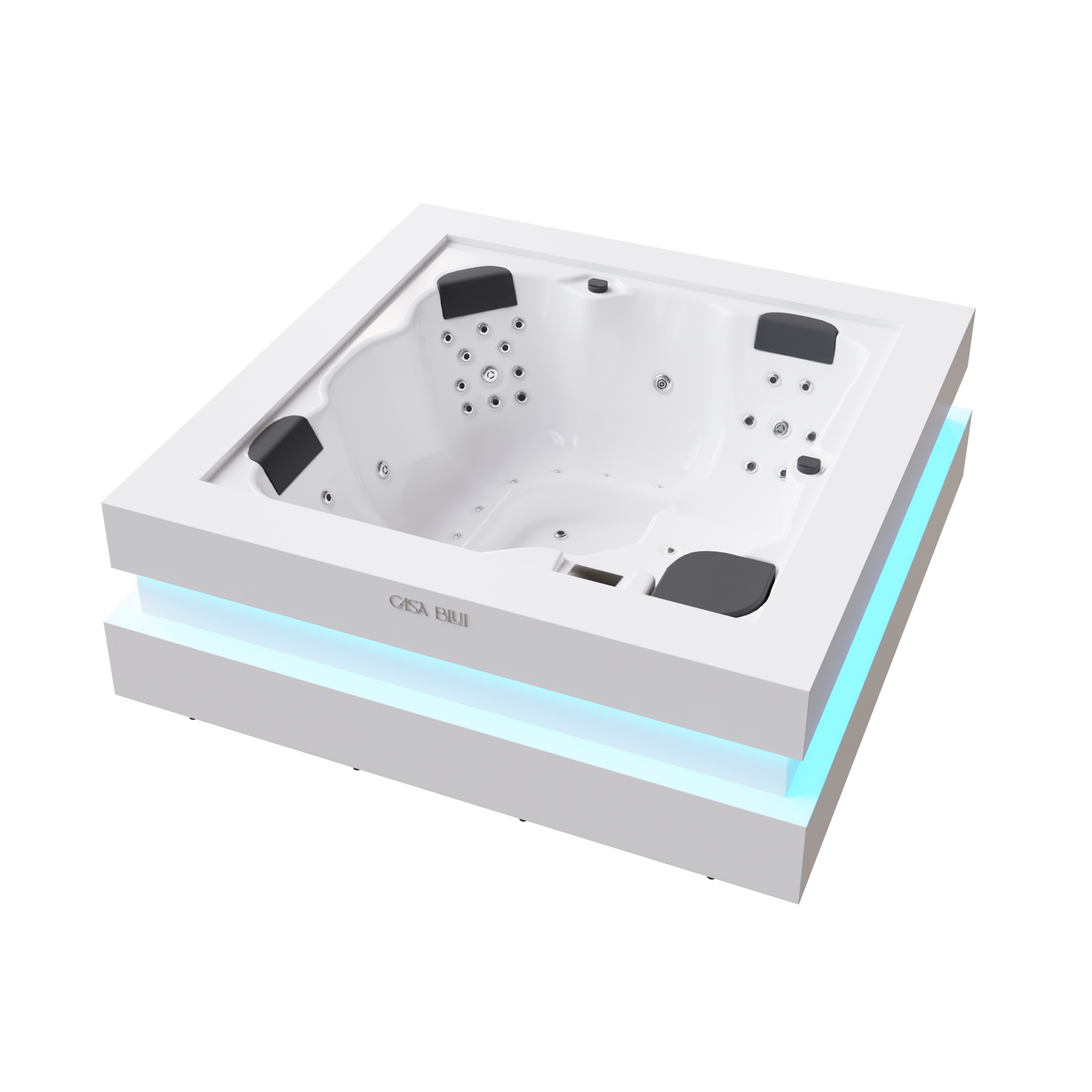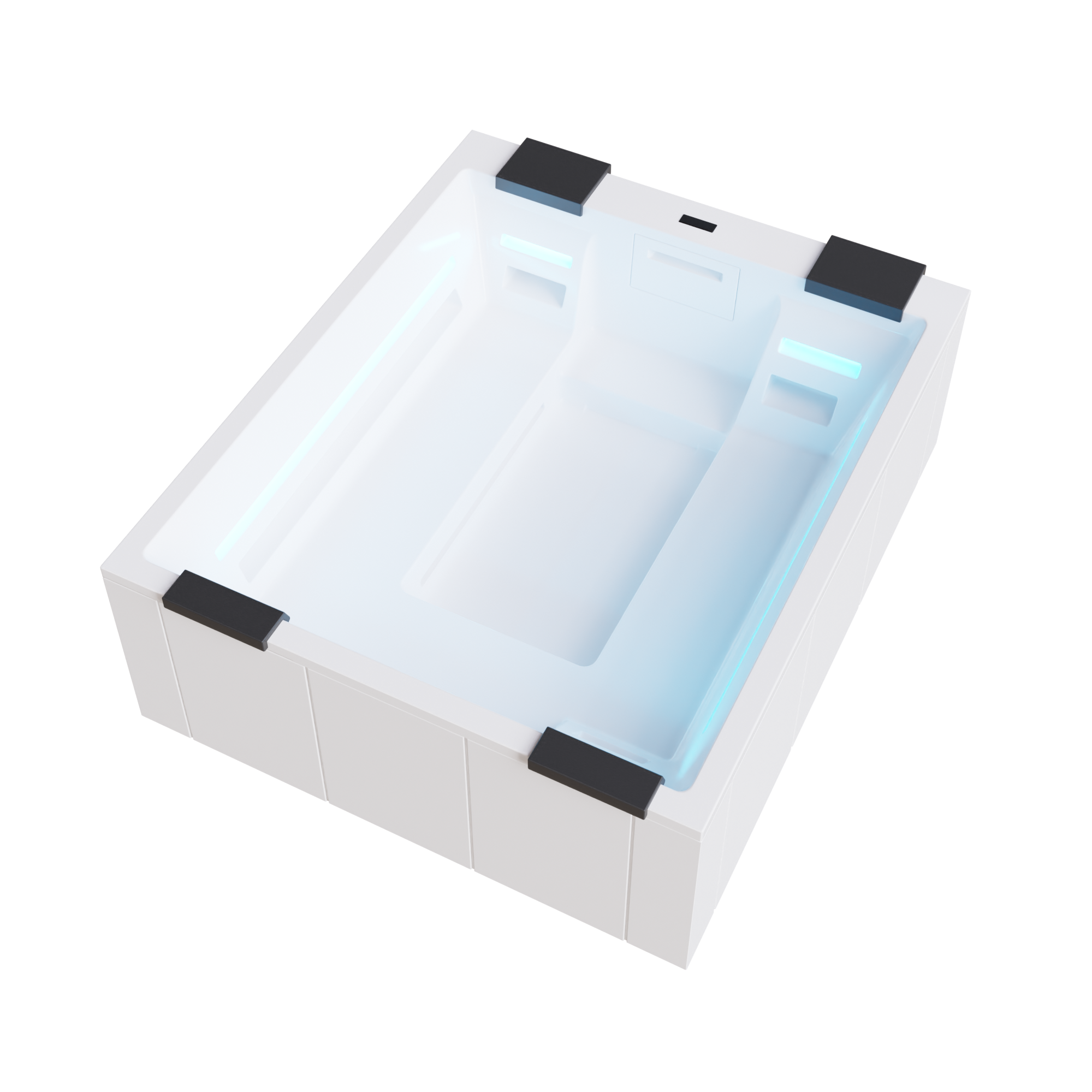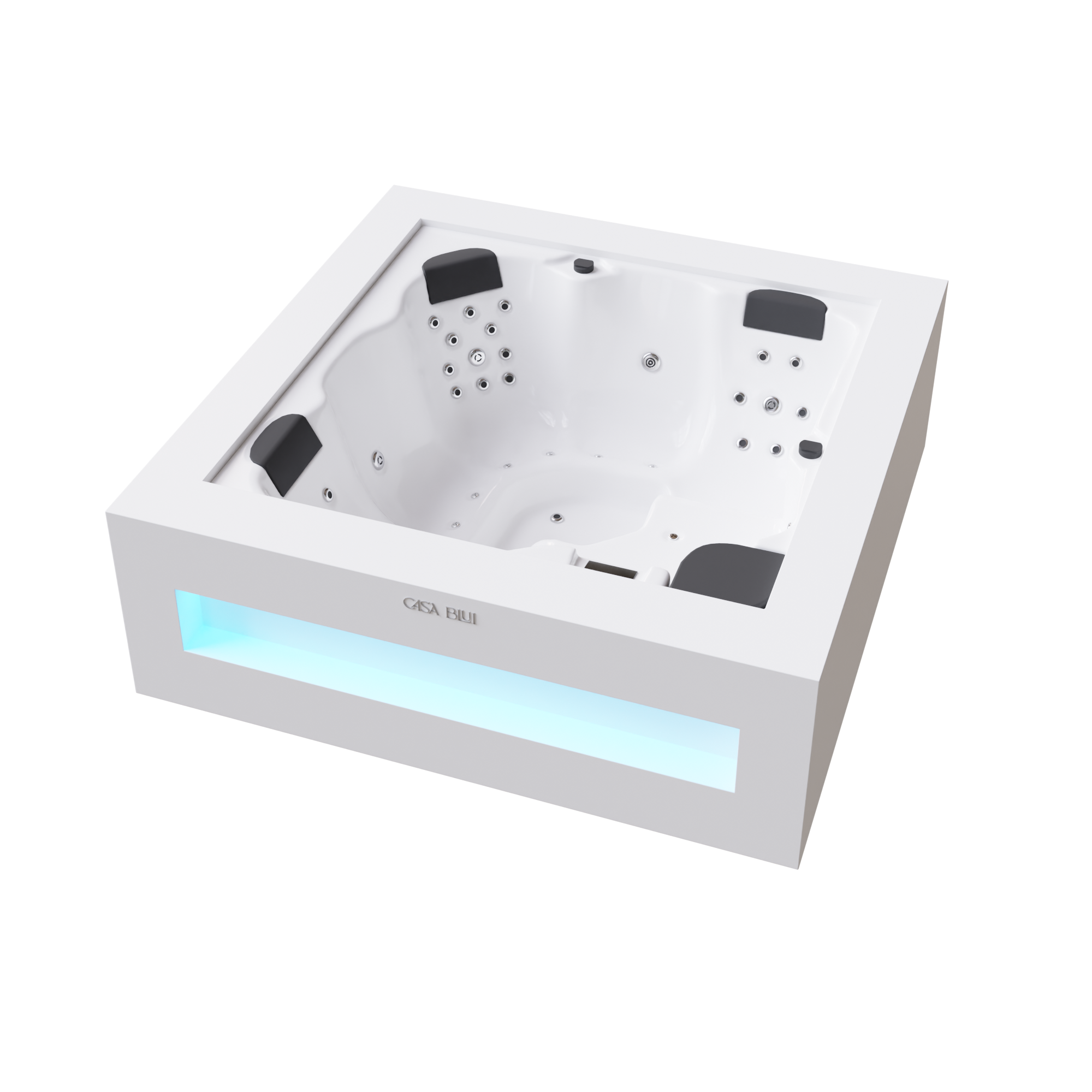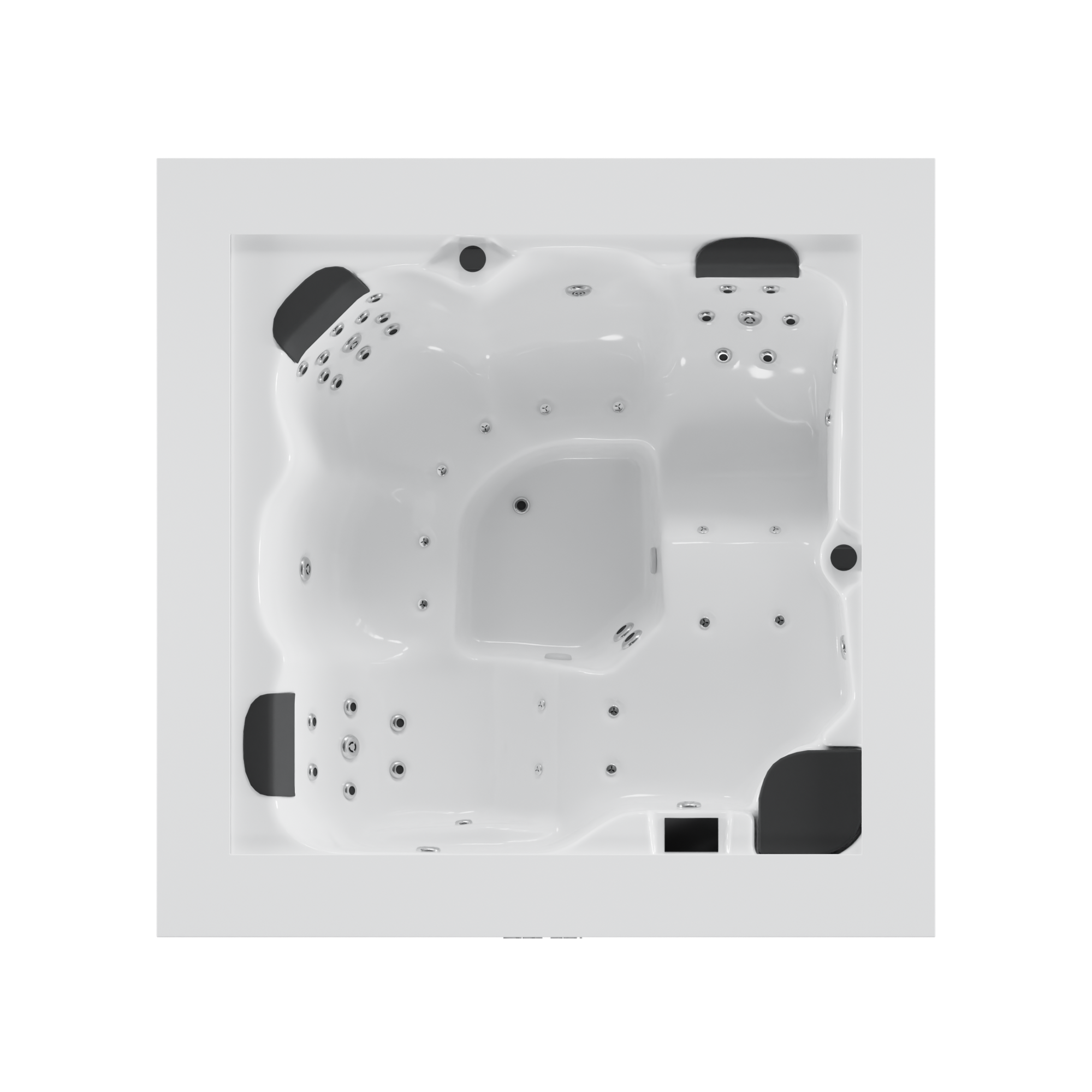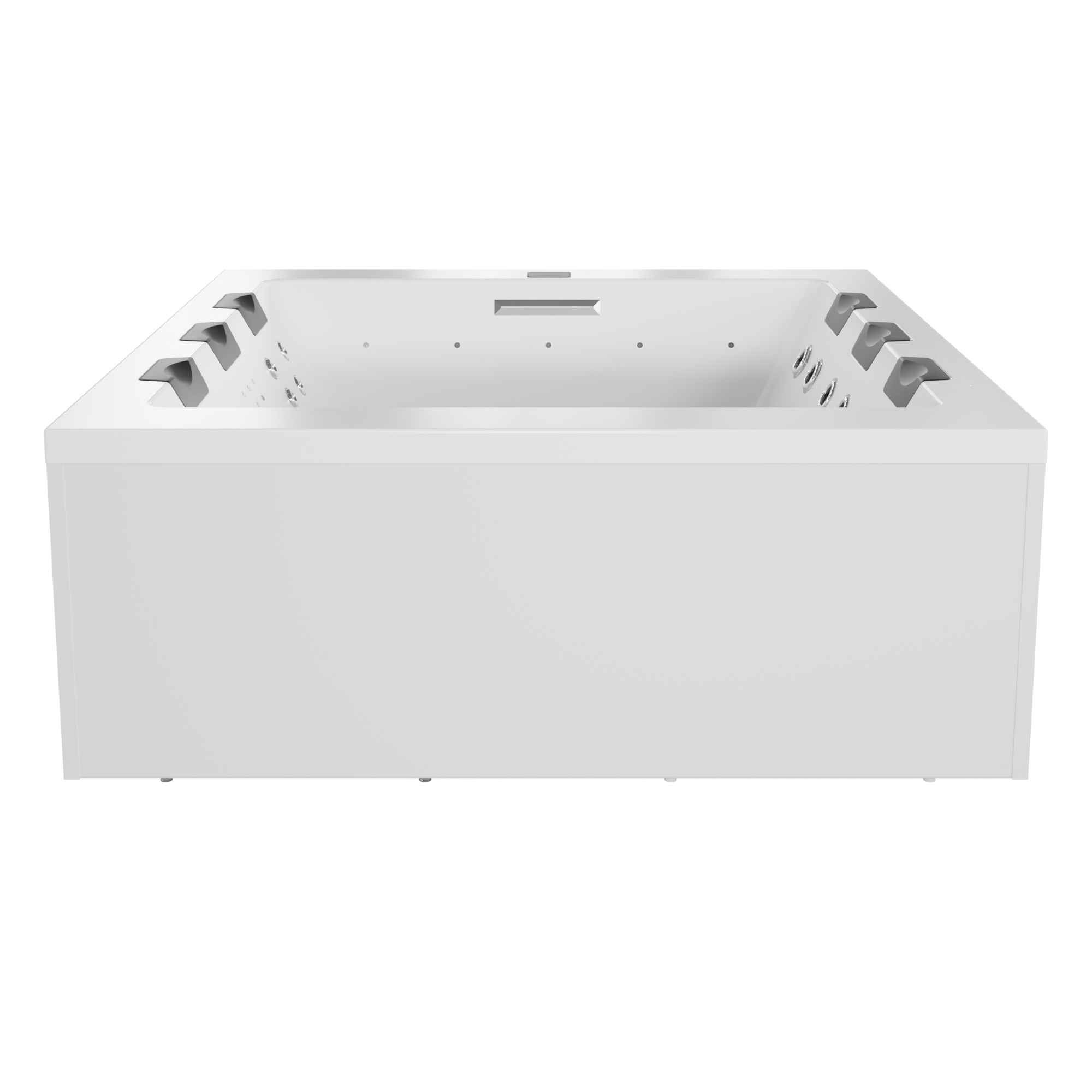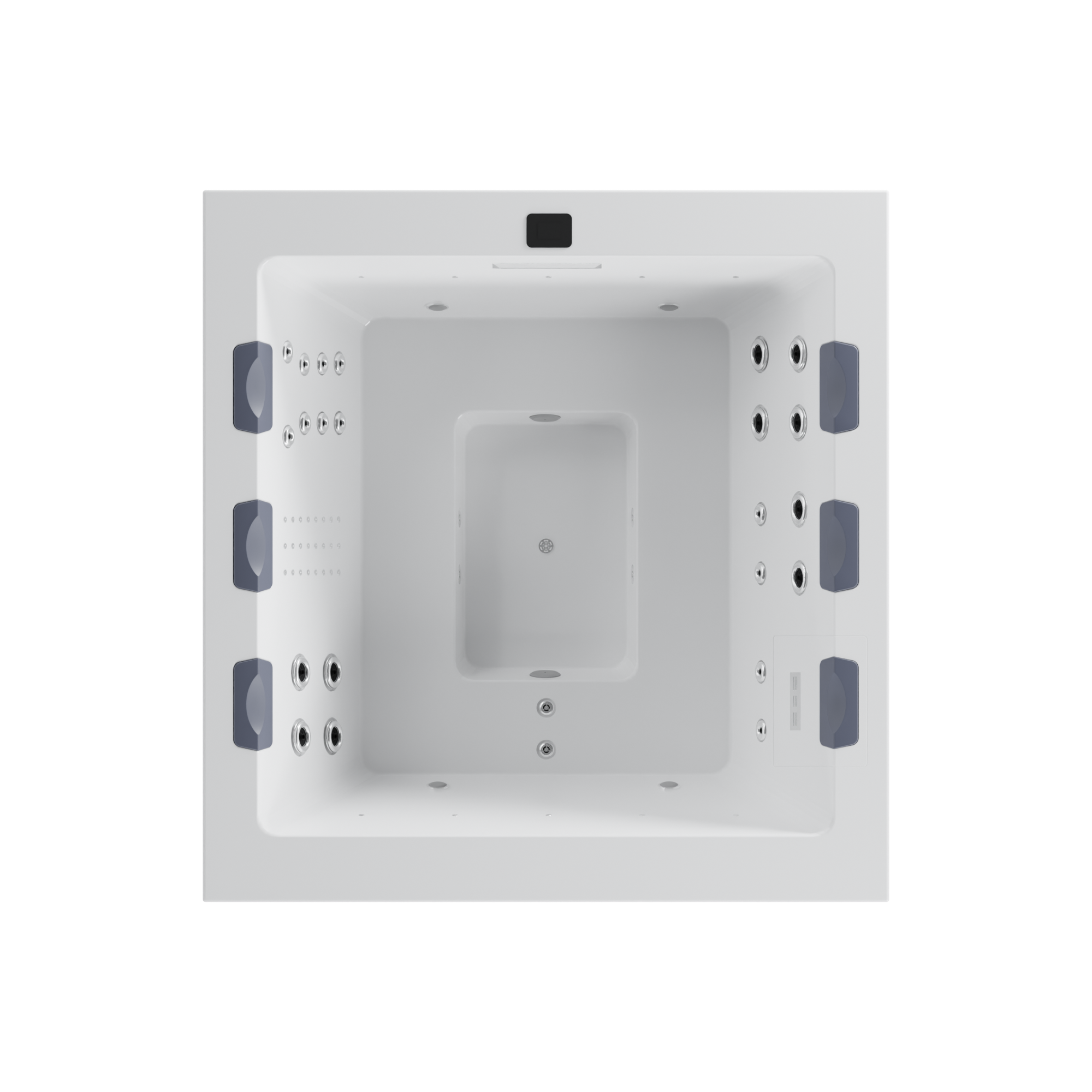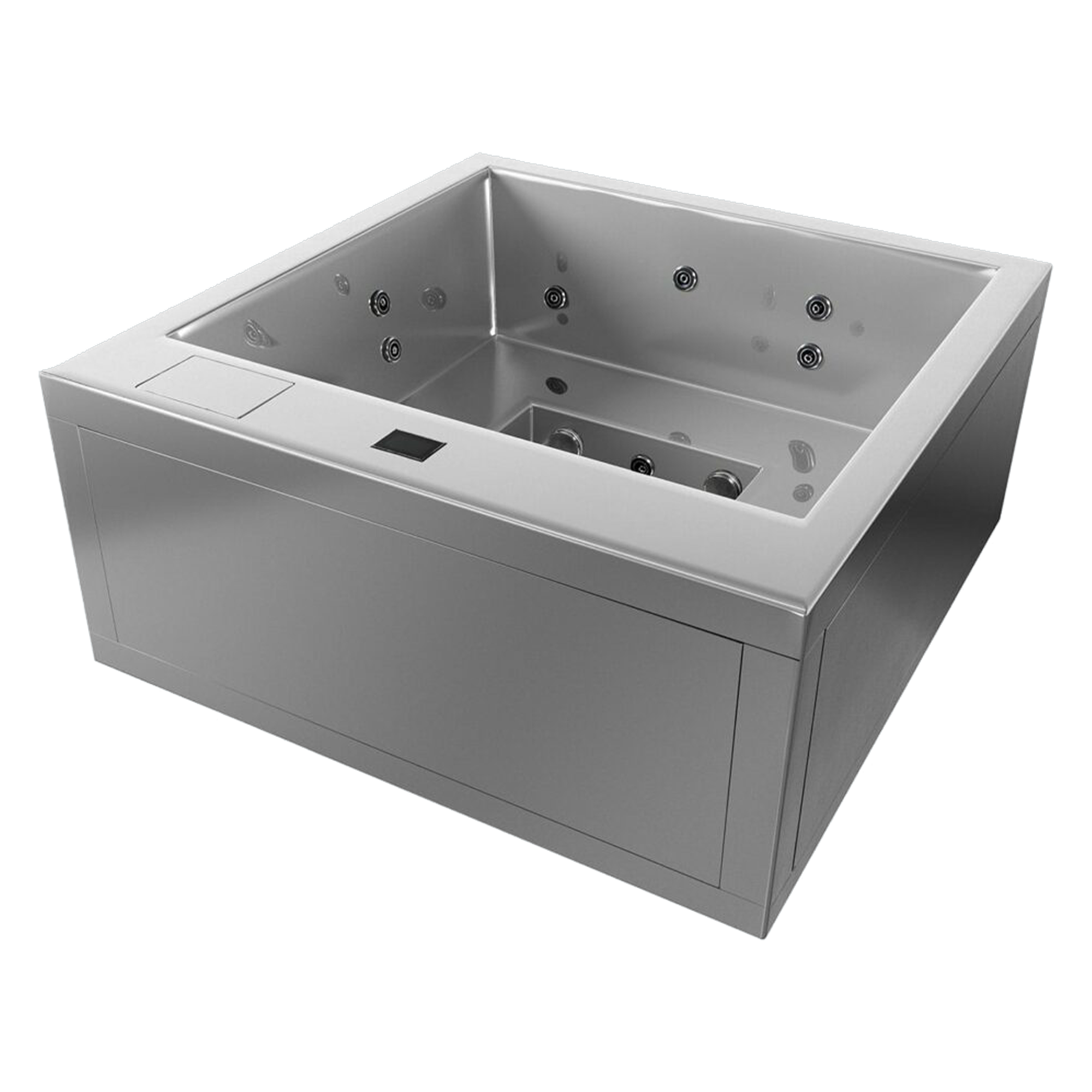Casa Blui Blog
How to Drain, Clean, & Refill Your Hot Tub Step by Step
By andrei newman
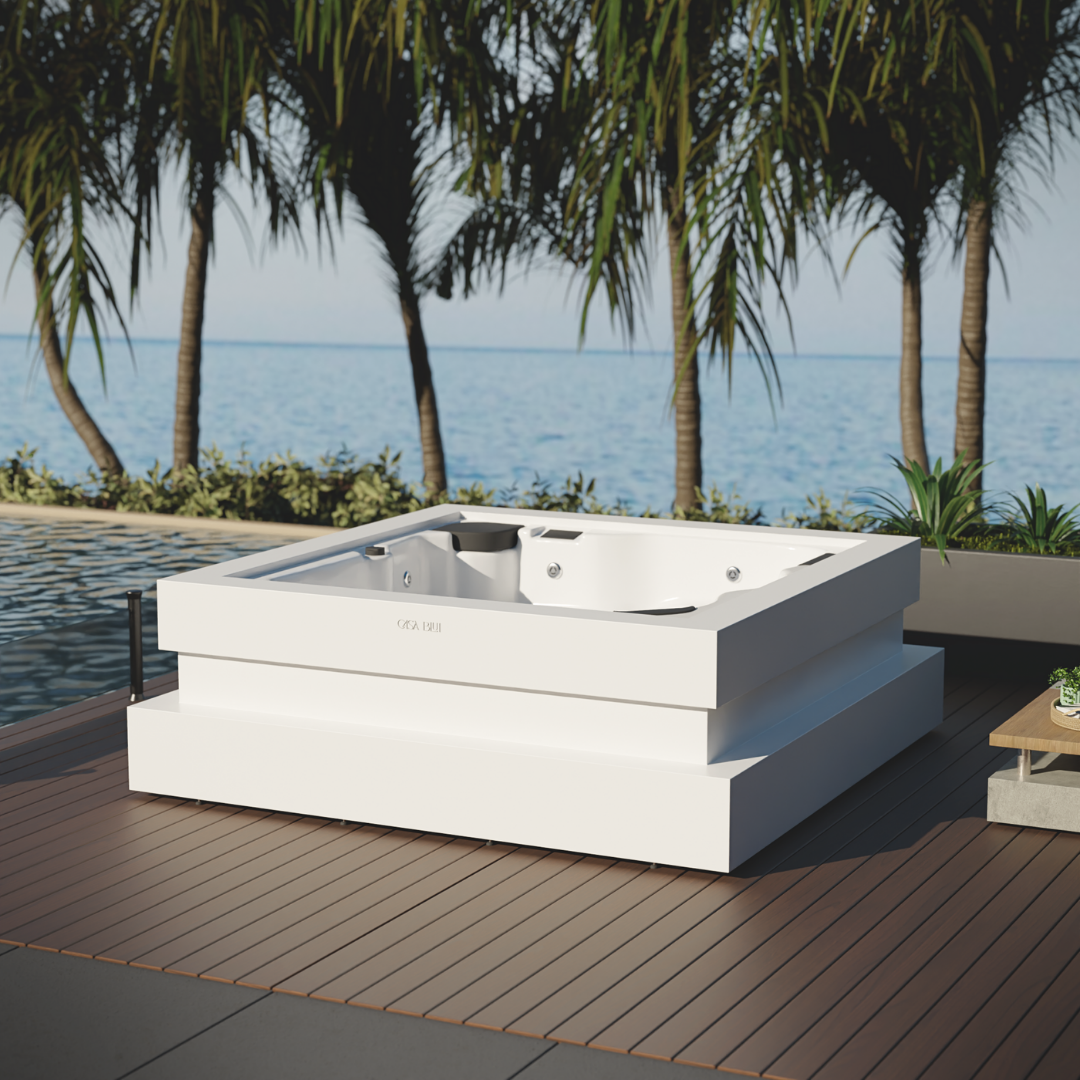
Every so often, your beloved hot tub needs a bit of TLC. It's not just about maintaining the proper chemical balance or keeping it sparkling clean, but also about knowing when and how to drain and refill it.
Whether you have a space-saving 2-person hot tub or a luxurious 12-person home spa, draining and refilling a hot tub can be daunting. But we assure you, it's not rocket science. With the right guide, you can do it like a pro. Whether you're a new hot tub owner or a seasoned spa enthusiast, we're here to simplify the process.
Why Regular Draining & Refilling Is Necessary
Let's dive into the reasons fueling the importance of regularly draining and refilling your hot tub.
-
Total Dissolved Solids (TDS): Over time, hot tub water absorbs minerals that evade filters and elevate TDS levels. High TDS levels lead to problems such as hazy water, foaming, and challenges in balancing water chemistry.
-
Residue buildup: The accumulation of residue on the spa's shell and plumbing threatens water quality. Draining your hot tub allows you to clean these critical areas deeply.
-
Chemical balance: Draining and refilling your home spa helps reset the water's chemical balance, ensuring the spa operates efficiently.
-
Preventing damage: Accumulated minerals and residue can damage your spa's components, such as the pumps and jets. However, regularly draining and refilling will help avoid complications.
How Often Should You Drain & Refill Your Hot Tub?
How frequently you drain and refill your hot tub depends on factors such as your frequency of use and the quality of your filters. However, we recommend draining and refilling your hot tub every three to four months. Use this timeframe as a starting point and adjust based on your circumstances and observations.
How to Drain Your Hot Tub
Preparing all the necessary equipment before starting will help ensure a smooth and efficient draining and cleaning.
1. Gather the Necessary Supplies
Gather all the necessary resources before letting a single drop of water out of the hot tub. A drain valve controls the draining process, typically at the bottom of the main panel or a corner of the hot tub. After most water drains, use the secondary valve for the hot tub's internal bleed lines.
Speed is often desired when draining large hot tubs. Depending on the size of your home spa, a submersible pump in the footwell or the hot tub's deepest point can be beneficial. For efficient and quick draining, use the Wayne WaterBUG Submersible Pump or the Superior Pump 91250 Utility Pump. Both are smaller than a cubic foot and weigh less than 10 pounds, making them convenient for household use.
A garden hose is ideal for directing the water out. Connect it to the drain valve, and the water will drain to a drain or sewer system.
But just draining is not enough. Purging the plumbing lines off biofilm and bacteria keeps the tub hygienic. The tool for the job? A pipe flush/cleaner. Lastly, acquire a wet/dry vacuum to remove any remnants of water and clean the jets.
2. Take Safety Precautions
Disconnect your hot tub from power before beginning the process. Additionally, don't let the tub sit with water for a short time after draining, as this could damage the shell over time. Opt for an eco-friendly pipe cleaner for safety, and recycle the water for gardening if possible. Drained water should be free from chemicals and hot tub cleaners before you release it into your garden.
3. Flush the Pipes
A top-quality hot tub plumbing cleaner facilitates this step. With the filter removed, adding this cleaner to the tub water and running your jets helps expel grime and deposits settled within the plumbing.
4. Drain the Hot Tub
Deciding on the best way to drain your hot tub hinges on your available equipment. Three primary methods exist:
-
Using the internal drain assembly: This built-in option, embedded in the spa's front side, maybe the easiest for many users. Locate it behind the skirt panel on the spa's front side. Detach the panel screws, connect a garden hose to the uncovered drain, and initiate water flow by twisting the valve counterclockwise.
-
Using a sump pump: More potent than an internal drain, a sump pump quickly expels water but requires additional equipment. Position it inside the hot tub and link it with a garden hose. Please turn it on and let the spa drain.
-
Siphoning with a garden hose: Although slower, this method is simple and requires no additional tools. Submerge the hose into the tub and ensure the other end rests at a lower position, enabling gravity to create a water flow.
How to Clean Your Hot Tub
With the hot tub empty, focus on cleaning to maintain your spa's longevity and hygiene. Cleaning before refilling eliminates traces of bacteria, mold, or residual water contaminants. A thorough clean ensures the fresh water isn't immediately exposed to any leftover impurities, protecting you from potential skin irritations.
Scrub the Interior
Scrub all hot tub surfaces with a hot tub-specific cleaning solution, such as Oh Yuk Healthy Hot Tub Cleaner and a non-abrasive sponge. Please don't overlook the jets, as they can harbor hidden contaminants. A product like Leisure Time Jet Clean can help you remove and prevent buildup.
Clean the Filter
Detach and rinse the filter using a garden hose. Soak it in a filter cleaning solution specified by its manufacturer's instructions to remove any trapped debris. After rinsing, ensure it's thoroughly dry before reinstalling. Clean your filters monthly to maintain water clarity and system efficiency; soak them in a degreaser and rinse them thoroughly.
Clean the Cover
Bacteria and mold often lurk on the underside of a hot tub cover. Clean it well with a multi-surface cleaner, rinse it, and allow it to air dry.
How to Refill Your Hot Tub
Begin by purging the hot tub's inner system with a product designed to dislodge accumulated organic matter from the tub's plumbing, such as Ahh-some Hot Tub/Jetted Bath Plumbing & Jet Cleaner. You can also refer to your spa's user manual or ask your local spa dealer for a recommendation.
Next, attach a hose to your water source and place the other end in the footwell of your tub. To prevent airlocks:
-
Place the hose in the filter housing to ensure the pipes fill first, maintaining your system's efficiency.
-
Ensure the hose runs water throughout the tub, from the footwell to all the seats within, to restrict airlocks.
-
As a guide, maintain a flow rate of about 18 gallons per minute when refilling.
Continually fill the hot tub until the water level aligns with the halfway point of the highest jet. If you need clarification on the proper water level, follow the hot tub manual.
Tips for Balancing the Water Chemistry
Now that you've drained, cleaned, and refilled your hot tub, balancing the water chemistry is crucial to keep your spa in good working order. Consider these key aspects:
-
pH levels: Target a pH range between 7.4 and 7.6. Values higher or lower may lead to issues like cloudy water or scale formation.
-
Alkalinity: To help stabilize the pH levels, keep the alkalinity between 80 and 120 parts per million (ppm).
-
Sanitizer levels: Ensure you maintain proper sanitizer levels to curtail bacteria growth — usually 3-5 ppm for chlorine or bromine. As a guideline, add approximately 1.5 ounces of chlorine or 2 ounces of bromine per 500 gallons of water. Then, adjust as needed based on regular testing.
-
Hot tub shock treatment: Regular hot tub shock treatments are beneficial. They help to oxidize contaminants, boost sanitizer effectiveness, and keep the water crystal clear.
Remember, keep your maintenance routine consistent when balancing your hot tub's water chemistry. Test the water regularly and adjust the respective levels as needed.
So, now that we've walked you through the steps to drain and refill your hot tub successfully, it's up to you to keep up with the regular maintenance to ensure your tub stays clean, safe, and enjoyable. Consistency in these routines will keep your tub in top shape. If you need clarification on water chemistry, consult your hot tub manual or contact one of our experts. Here's to many more relaxing soaks in your well-maintained hot tub.

